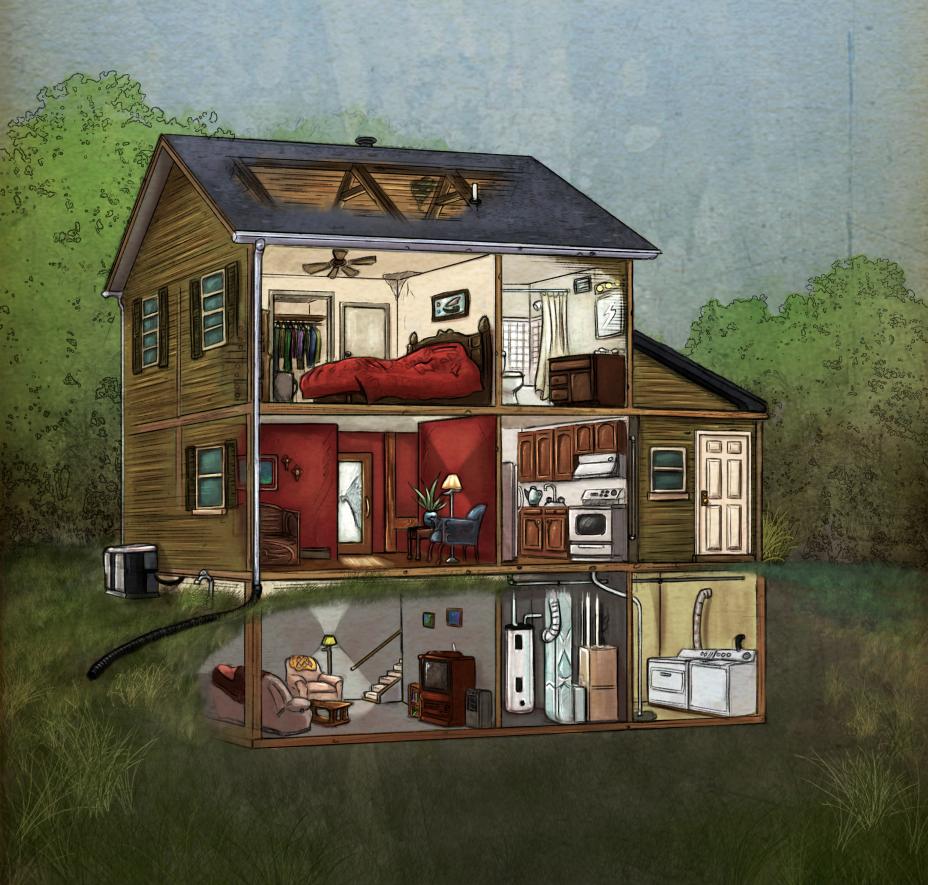
Given the right conditions, mold can spring up in any home, both indoors and outdoors, no matter the age or condition of the property. Mold is able to cause extensive damage and cause health conditions in those exposed, such as respiratory ailments and irritations. Mold is not something to be ignored. In this article, we will learn the key places in your home you should look for mold.
The Bathroom
Mold loves wet
and humid environments, so if your bathroom isn’t properly
ventilated, you may find you are regularly battling against mold. The
places you should check include:
- The shower/bathtub – Check around the tile grout, faucets, drains, and the shower head and screen. You may also want to look in more hidden areas, such as under or around shampoo bottles and on washcloths and between the folds of shower curtains.
- Sink and Toilet – Check the surface of the sink or counters, as these are some of the most common places to discover mold. You will also want to check any type of caddy, such as for toothbrushes. Check the pipes for the sink and toilet, under the bathroom sink, and behind the toilet.
The Kitchen
Mold in the
kitchen can also be common due to the increased steam and humidity
caused by cooking. When checking for mold in your kitchen you should
look at the:
- Kitchen Sink – Pay attention around your sink area. Check any caulking as well as any sponges or caddies around the sink area. You should also check under the kitchen sink, particularly around the pipes.
- Fridge/Pantry – Food and mold are the best of friends. Therefore, check and clean out your fridge and pantry frequently, removing expired produce.
- Microwave/Stove – Splashes and grease spots from cooking which have been left uncleaned can allow mold to thrive. Clean these areas regularly to help prevent this.
- Misc Places – Cutting boards, trash cans, behind the stove, and around windows and window sills can also be common mold hotspots.
Looking in the Bedroom
Humidity
and soft furnishings is also a combination that mold loves.
Therefore, in your bedroom, you should inspect the:
- Mattress – You should check both sides of your mattress for mold. Replace old mattresses for mold-resistant ones.
- Windows and Sills – Windows can get quite damp. This can allow mold to thrive. You should check around the windows for this, as well as curtains, which may have come in contact with the growing mold.
Looking in the Living Room
The
living room is probably one of the least common places to discover
mold. However, you should remain vigilant.
- Soft Furnishings – Your couch and curtains can attract mold spores. If they become damp, spores can thrive unless it is dried out completely.
- Indoor plants – House plants can increase humidity and can also cause mold to grow. Be careful not to overwater your plants, as this can help prevent mold growth in your potted plants.
- Fireplace/Chimney – Fireplaces and chimneys are damp, cool, and dark, which is the ideal environment for mold to grow. Check this area regularly and respond quickly if you notice mold start to form. Call a professional for help.






